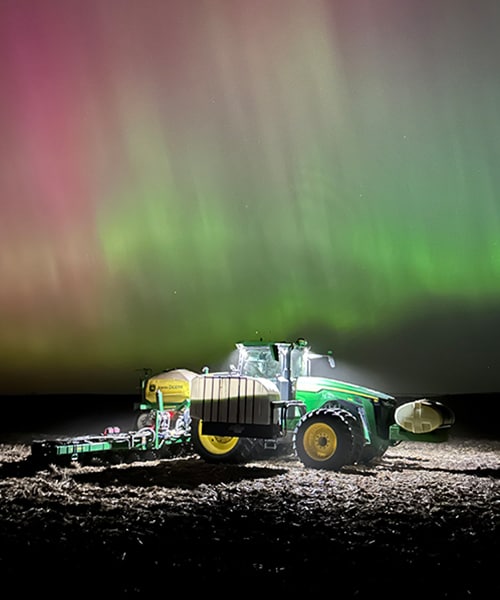Older GPS Receivers Disrupted by Solar Storm
Back in May, a large solar storm (powerful bursts of energy in the form of solar flares) struck Earth with historic strength, causing disruptions to vital systems and services vital to farmers’ businesses.

According to Tim Marquis, a senior product manager at John Deere, “The biggest impact to the agriculture industry centered on GPS guidance systems. GPS receivers work when a signal is received at regular intervals, much like a beat from a metronome, from a satellite in orbit. During solar storms, that signal hits a ‘fog’ of charged particles and can be lost. And machines can’t know precisely where they are thanks to this interference.”
Why it matters: The event impacted Deere’s customers, many of whom were in the fields for spring planting at the time. The storm affected important navigation signals that ensure accuracy for critical jobs such as planting and spraying.
Not all signals were lost: “Our older StarFire™ receivers such as the SF3000 and SF6000 models seemed to be most affected,” explained Al Savage, manager, StarFire™ Network, John Deere. “Those receivers don’t possess the same capability as the newer SF7000 Series.”
What they're saying: During the storm, Deere’s SF7000 Series held its own. The receiver is designed to continuously receive correction signals from multiple satellite groups and switch to the strongest signal if one is blocked.
“The latest StarFire receivers normally track about 40 satellites at one time, and with improved antenna technology, can determine which satellite signals are being impacted by the solar storm and discard those signals when it develops its position solution,” said Jason Blanchette, product manager, John Deere. “This means farmers can still achieve sub-inch pass-to pass-accuracy season after season, no matter what’s going on in outer space.”